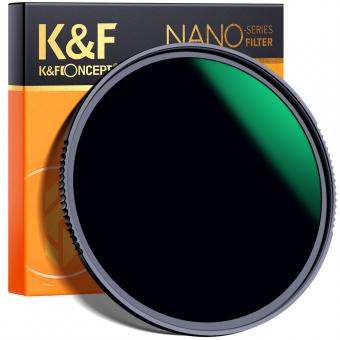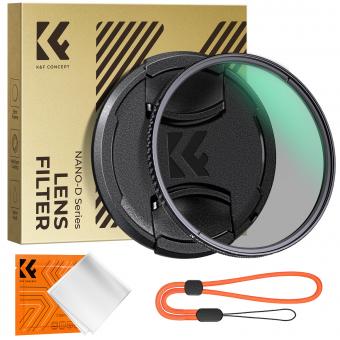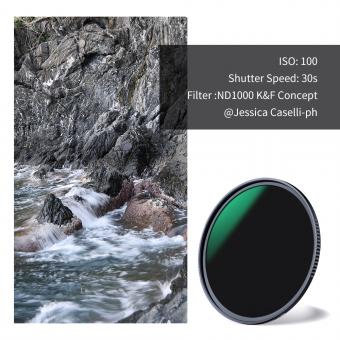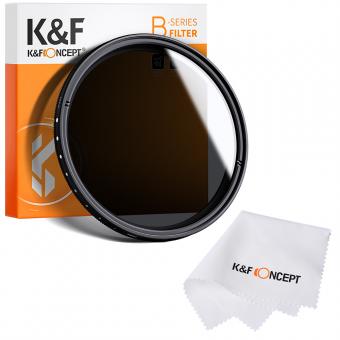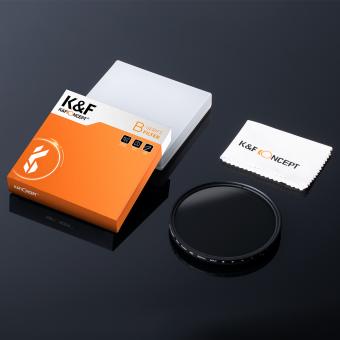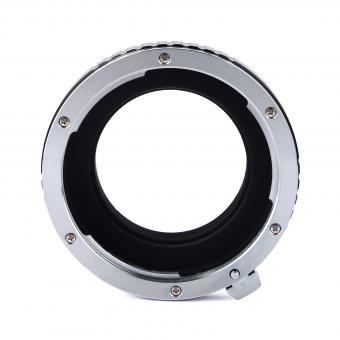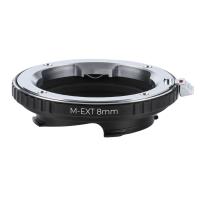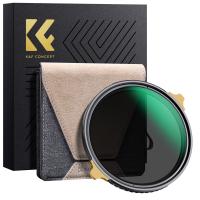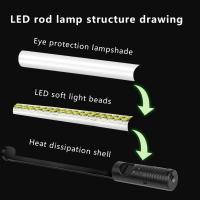How To Lubricate A Lens Filter Thread ?
To lubricate a lens filter thread, you can use a small amount of lens filter grease or silicone lubricant. Apply a thin layer of the lubricant to the threads of the lens filter using a clean, lint-free cloth or a cotton swab. Be careful not to apply too much lubricant, as it can attract dust and dirt. Gently screw the filter onto the lens, ensuring that it is properly aligned. Avoid overtightening the filter, as this can cause damage to the lens or filter. If you encounter any resistance while screwing on the filter, stop and check for any debris or damage that may be causing the issue. Regularly cleaning and lubricating the lens filter thread can help ensure smooth and easy attachment and removal of filters.
1、 Types of lubricants suitable for lens filter thread maintenance
Types of lubricants suitable for lens filter thread maintenance:
When it comes to lubricating a lens filter thread, it is important to choose the right type of lubricant to ensure smooth operation and prevent any damage to the lens or filter. Here are some types of lubricants that are commonly used for lens filter thread maintenance:
1. Silicone-based lubricants: Silicone-based lubricants are widely recommended for lens filter thread maintenance. They provide excellent lubrication and are resistant to temperature changes, making them ideal for use in various weather conditions. Silicone-based lubricants also have good compatibility with different materials, including metal and plastic, commonly found in lens filter threads.
2. Graphite lubricants: Graphite lubricants are another option for lens filter thread maintenance. They offer excellent lubrication and are known for their low friction properties. Graphite lubricants are often used in high-precision applications and can provide long-lasting lubrication for lens filter threads.
3. Teflon-based lubricants: Teflon-based lubricants, also known as PTFE (polytetrafluoroethylene) lubricants, are commonly used for lens filter thread maintenance. They offer excellent lubrication and have a high resistance to temperature and chemicals. Teflon-based lubricants also provide a smooth and friction-free operation for lens filter threads.
It is important to note that when applying lubricant to a lens filter thread, only a small amount should be used. Excessive lubrication can attract dust and debris, which can affect the image quality. Additionally, it is recommended to clean the lens filter thread thoroughly before applying any lubricant to ensure optimal performance.
It is always a good idea to consult the lens manufacturer's recommendations or seek professional advice before applying any lubricant to the lens filter thread. The latest point of view suggests that using a dry lubricant, such as a graphite-based lubricant, may be a better option as it reduces the risk of attracting dust and debris. However, it is essential to ensure that the chosen lubricant is compatible with the lens and filter materials to avoid any potential damage.

2、 Step-by-step guide to lubricating a lens filter thread
Step-by-step guide to lubricating a lens filter thread:
1. Gather the necessary materials: You will need a lens filter, a lens cleaning solution, a microfiber cloth, and a suitable lubricant. It is important to choose a lubricant specifically designed for camera equipment to avoid any damage.
2. Clean the lens filter thread: Before applying any lubricant, ensure that the lens filter thread is clean and free from any dirt or debris. Use a lens cleaning solution and a microfiber cloth to gently wipe the thread and remove any particles.
3. Apply a small amount of lubricant: Take a small amount of the suitable lubricant and apply it to the lens filter thread. Be cautious not to use too much as excess lubricant can attract dust and dirt, potentially causing more harm than good.
4. Spread the lubricant evenly: Use a clean microfiber cloth to spread the lubricant evenly across the lens filter thread. Make sure to cover the entire thread surface, ensuring smooth movement.
5. Test the lubricated thread: Attach the lens filter to your camera lens and check if the thread moves smoothly. If there is any resistance or stiffness, you may need to apply a bit more lubricant and repeat the process.
It is worth noting that lens filter threads are typically designed to be self-lubricating, and therefore, lubrication is not always necessary. However, if you notice any signs of stiffness or difficulty in attaching or removing the filter, lubrication can help improve the functionality of the thread.

3、 Common mistakes to avoid when lubricating a lens filter thread
Common mistakes to avoid when lubricating a lens filter thread:
1. Using the wrong type of lubricant: One of the most common mistakes is using the wrong type of lubricant on the lens filter thread. It is important to use a lubricant that is specifically designed for camera equipment. Using the wrong type of lubricant can damage the lens and affect its performance.
2. Applying too much lubricant: Another mistake to avoid is applying too much lubricant. Excess lubricant can attract dust and dirt, which can lead to further damage to the lens. It is important to apply a small amount of lubricant and ensure that it is evenly distributed on the filter thread.
3. Not cleaning the filter thread before lubricating: Before applying any lubricant, it is crucial to clean the filter thread thoroughly. Dust, dirt, and debris can accumulate on the thread, and if not removed, they can mix with the lubricant and cause damage to the lens. Use a soft brush or a microfiber cloth to clean the thread before applying any lubricant.
4. Over-tightening the filter: When screwing the filter onto the lens, it is important not to over-tighten it. Over-tightening can cause the filter thread to become stuck or damaged. It is recommended to tighten the filter until it is snug, but not excessively tight.
5. Not checking for compatibility: Before applying any lubricant, it is essential to check if it is compatible with the lens material. Some lubricants can react with certain lens materials and cause damage. Always read the manufacturer's instructions and ensure that the lubricant is safe to use on your specific lens.
In conclusion, when lubricating a lens filter thread, it is important to use the correct lubricant, apply it sparingly, clean the thread beforehand, avoid over-tightening the filter, and check for compatibility. By following these guidelines, you can ensure that your lens filter thread remains in optimal condition and functions properly.
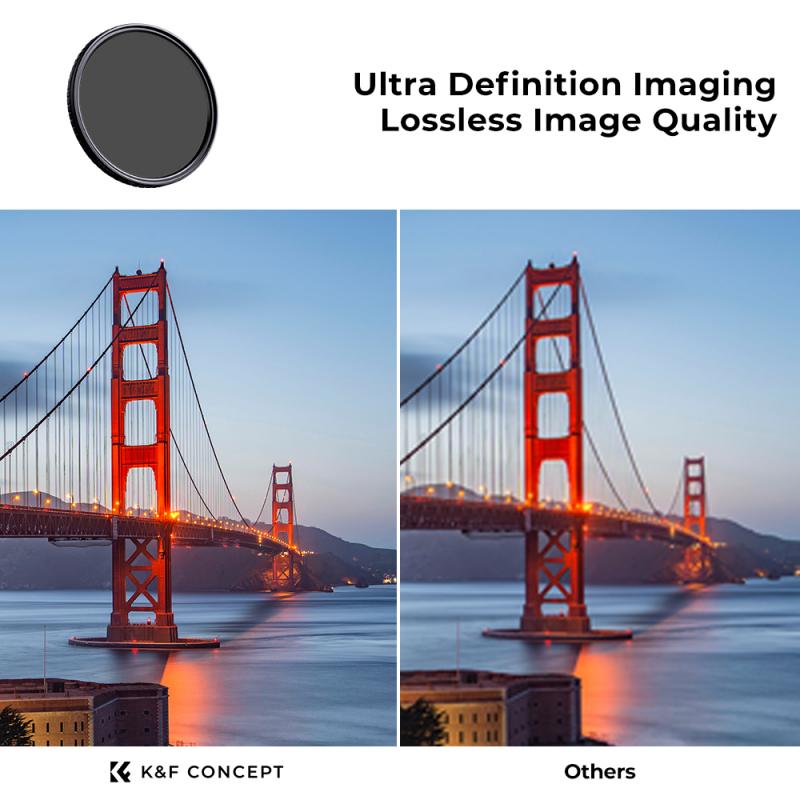
4、 Importance of regular maintenance for lens filter threads
Importance of regular maintenance for lens filter threads:
Regular maintenance of lens filter threads is crucial for ensuring optimal performance and longevity of your camera equipment. The filter thread is the part of the lens where you attach filters, such as UV filters, polarizers, or neutral density filters. Over time, these threads can become dirty, sticky, or even damaged, which can affect the quality of your images and potentially cause issues with attaching or removing filters.
One of the key reasons for maintaining lens filter threads is to prevent any damage or wear that may occur due to dirt, dust, or debris. These particles can accumulate on the threads and cause them to become stiff or difficult to rotate. Regular cleaning of the threads with a soft brush or microfiber cloth can help remove any contaminants and ensure smooth operation.
Additionally, lubricating the lens filter threads is an essential part of maintenance. Applying a small amount of lens filter thread lubricant can help reduce friction and make it easier to attach and remove filters. It is important to use a specialized lubricant that is specifically designed for camera equipment to avoid any potential damage to the lens or filters.
However, it is worth noting that not all lens filter threads require lubrication. Some modern lenses are designed with self-lubricating threads or have coatings that reduce the need for additional lubrication. It is always recommended to consult the lens manufacturer's guidelines or seek professional advice before applying any lubricant.
In conclusion, regular maintenance of lens filter threads is vital for optimal performance and longevity of your camera equipment. Cleaning and lubricating the threads will help prevent damage, ensure smooth operation, and ultimately contribute to capturing high-quality images.




